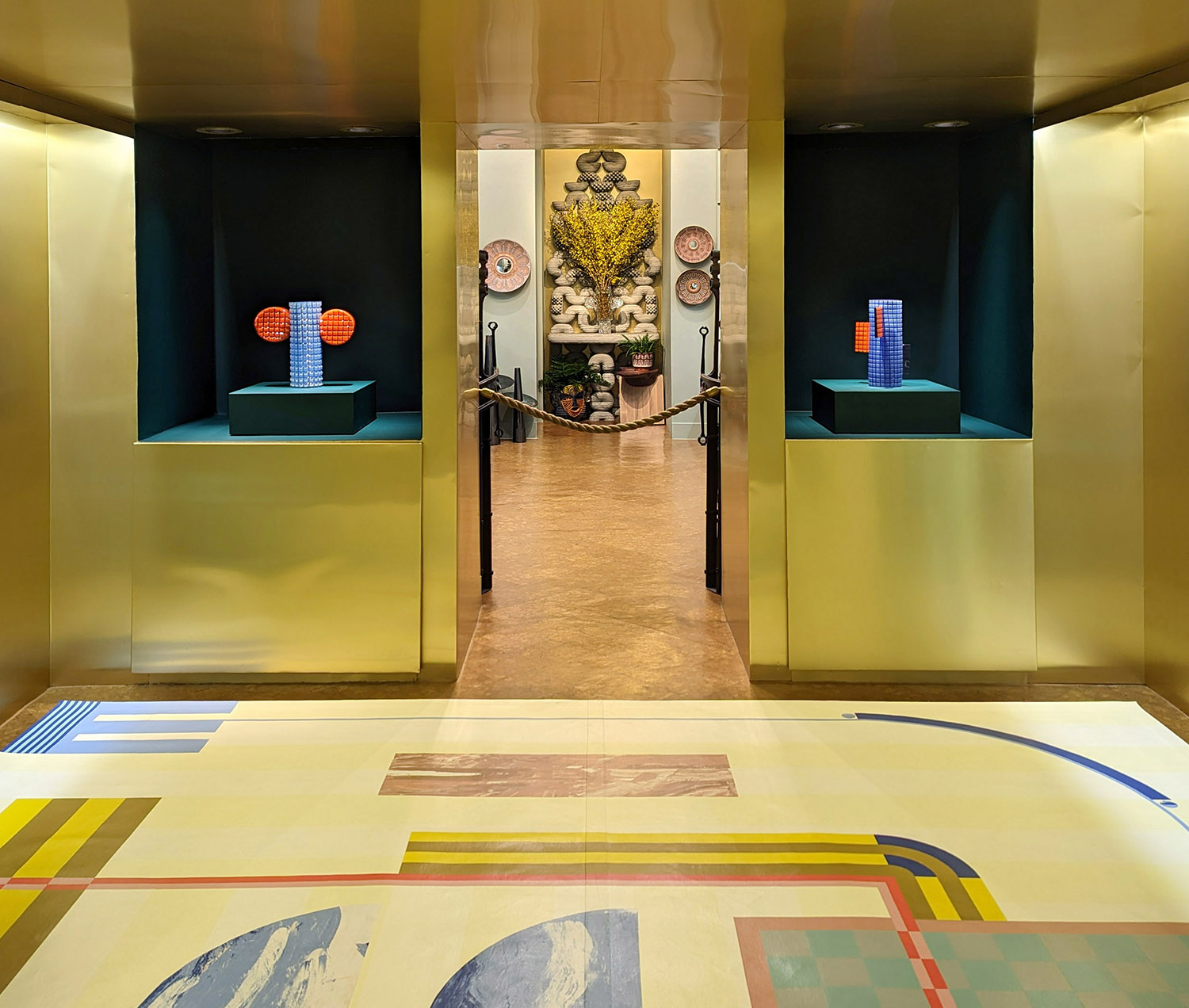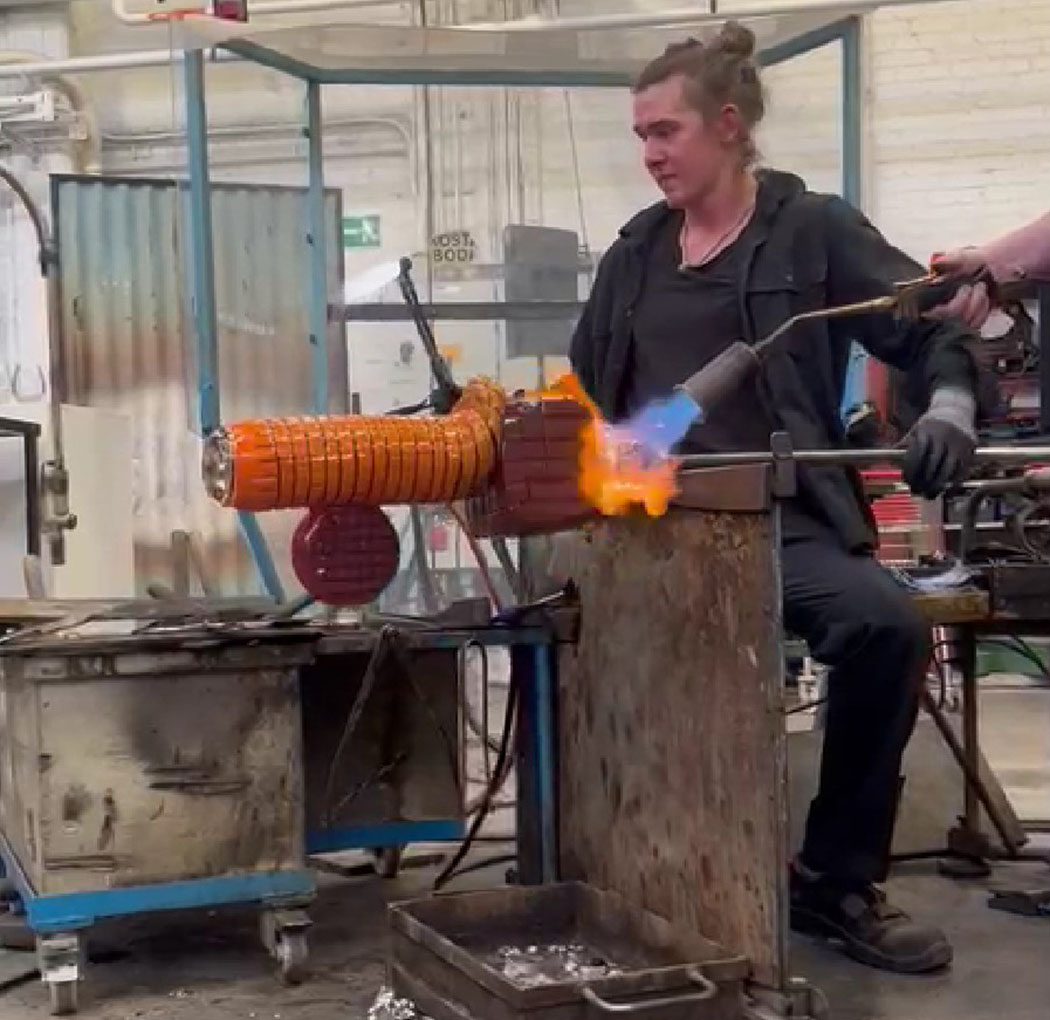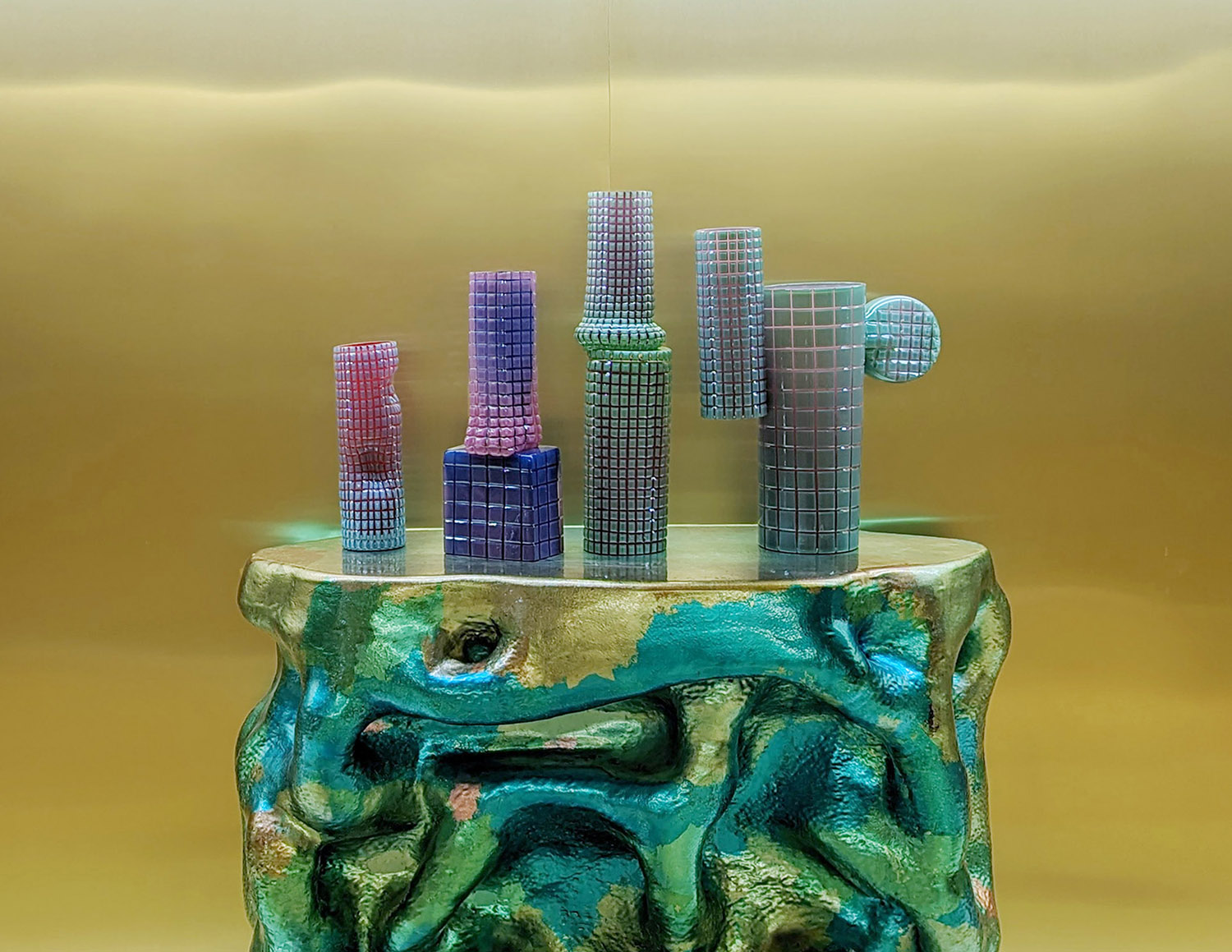Simon Klenell: Coloring a Dream
| April 12 - June 17, 2023 |

Simon Klenell’s playful strategy to provoke innovation is to taunt convention and flaunt tradition. In Coloring a Dream he brings his work into new territory with the addition of layers of color, pushing his material away from the conventional association of being “crystal clear.” Simon’s new body of work was created in partnership with the renowned Swedish glasshouse Orrefors Kosta Boda, inspiring the artist’s introduction of color in honor of the ‘color overlay’ technique so closely connected to the company’s illustrious history. At the heart of this project is a probing of notions of purity and perfection, and by extension, Swedish identity itself. Simon’s signature technique begins with the traditional, if exaggerated, cutting of deep and bold patterns on crisp geometric crystal shapes. This becomes the foundation for the second, more dramatic step in his process, reheating these cold-cut elements and then joining them with thick globs of molten glass, distorting them in the process. In the Swedish glass tradition, combining color overlays and cutting is virtually unheard of, and for this very reason, they are at the heart of the work in Coloring A Dream. The overlay, which can be executed in several ways (including the classic “Swedish Overlay”), is a procedure for layering different colors of hot blown glass and is often used at Kosta to create special color effects. By contrast, cut crystal, of which Orrefors and Kosta are both noteworthy historical leaders, is traditionally colorless to best capture light effect and maximize sparkle. Simon’s new vessels have opaque or translucent outer layers over richly colored transparent inner cores that are revealed only by deep cutting of an all-over grid pattern that delineates and contours the forms with the relentlessly rational effect that only a grid may achieve. Instead of using cutting to dazzle and embellish, the goal of Simon’s grid is to describe and lay bare the form and technique. This visual plotting of the form draws attention to it, begging the questions “how” and “why” it is the shape it is. |

To maintain focus on form as an outcome of processes, Simon has restricted the shapes he uses to the simple and fundamental; the square and round cylinder, the disk, and the cuboid. Individually, these basic forms are easily comprehended, but combined, their interaction creates complexity and exponential possibilities. To avoid unnecessary compositional elaborations, Simon relies on a process to constrain and translate his work; he draws each piece crudely on the computer, shuffling and scaling basic shapes on the screen. This approach is very different from his typical procedure, in fact, it is the other great innovation in this new work. When working independently, Simon’s typical design process is relatively free, and open to improvisation. The act of making work is an important refuge for Simon who enjoys being physically engaged in every step. Working for the first time with Kosta Boda’s team of professional glassblowers, who are accustomed to a fast-paced production environment, Simon describes his new objects as the least hands-on work that he has so far produced. Simon’s elemental forms, simple composition, restricted 2D design process, and didactic grid-cut, are all part of a strategy to retain control and to avoid the distractions and dilutions introduced by the collaborative fabrication process. He is limiting process variables in exchange for creative control, while also expanding material options (the colored glass) for dramatic effect. Happily, this restraint and control has only buttressed the core features of his work; the cold cutting and hot joining. Simon’s joined forms are immediately noteworthy for their unusual off-kilter assembly. As a super-cooled liquid, glass has no ’natural’ or inherent form, left to its own devices it describes the location that gravity brought it to at the moment it cooled. The shape of glass is thus always a record of process frozen in time. Simon’s semi-melted forms, joined askew by dollops of liquid glass, demonstrate their precarious and temporary state, vulnerable to being reheated and reshaped. The shaping of glass is a choreography of sorts, a dance that requires sustained speed and coordinated dexterity to defy gravity’s pull. These criteria describe a framework, or rules, that determine what may be made and how. In this manner, it is a metaphor for society, a microcosm of collaborative social action |

Simon uses color as a symbolic tool as well, inspired not only by Kosta’s historic use of overlays, but by classical Greco-Roman statuary. Since the Renaissance, this statuary has been associated with pure white marble, which is now known to have been often covered in a vibrant layer of painted colors. Where the myth of whiteness was used as a symbolic representation of the apotheosis of classical Greco-Roman culture and the foundations of Western culture, the revelation of it’s chromatic origin has been received by many ‘traditionalists’ as barbarism and corruption. Simon’s polychromy displaces simplistic ideas of ‘purity’, recognizing it as a subjective and ever-changing social construct, be it in colorless crystal or classical statuary. Instead, he celebrates the differentiation provided by mixing colors, leveraging their combination as a tool to reinforce the core characteristic, form. Simon confronts us with awkwardly contrived geometric compositions in layered, boldly colored glass, traced with grids to reveal the material and emphasize the form. His materials and his process are closely associated with Swedish cultural tradition and history, yet his unconventional handling and configuration of them proposes that our understanding of our identity and values may be revisited and altered, strengthening them without compromising them. - Damon Crain
The work in this exhibition was produced with the support of The Ulrica Hydman Vallien Foundation. As the 2021 recipient of the foundation’s annual award, Simon Klenell received financial support and an invitation to develop new and experimental work in partnership with Orrefors Kosta Boda at the glassworks in Kosta. We are proud to present the body of work in this exhibition, which was the product of the award and partnership.
|
